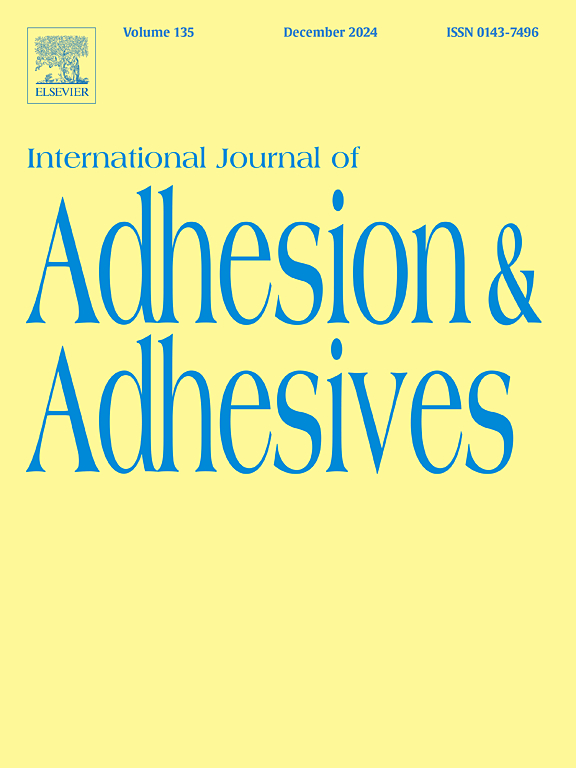Enhancing interfacial bonding and mechanical properties of CF/EP composites through low-temperature jet plasma treatment
IF 3.2
3区 材料科学
Q2 ENGINEERING, CHEMICAL
International Journal of Adhesion and Adhesives
Pub Date : 2025-05-20
DOI:10.1016/j.ijadhadh.2025.104067
引用次数: 0
Abstract
Carbon fiber reinforced epoxy (CF/EP) composites are widely employed in aerospace, automotive, and maritime industries. However, the inherently smooth surface and low chemical reactivity of carbon fibers compromise the interfacial bonding with epoxy resin. This study examines the effect of low-temperature jet plasma treatment at various processing speeds (25, 50, 100, and 200 mm/s) on the surface characteristics of carbon fibers and the mechanical performance of CF/EP composites. A treatment rate of 50 mm/s was found to optimally enhance fiber surface roughness and promote the formation of -C=O functional groups—evidenced by a decrease in carbon content from 75.51 % to 73.27 % and an increase in oxygen content from 24.49 % to 26.73 %. Consequently, composites fabricated under these conditions exhibited notable improvements in bending strength (522.28 MPa, +19.23 %), bending modulus (33.22 GPa, +50.38 %), tensile strength (610.62 MPa, +40.35 %), and tensile modulus (27.94 GPa, +38.59 %). Scanning electron microscopy further confirmed enhanced interfacial bonding through a reduction in voids. This concise study provides experimental evidence for optimizing carbon fiber surface treatments to achieve superior composite performance.
低温喷射等离子体处理增强CF/EP复合材料的界面结合和力学性能
碳纤维增强环氧树脂(CF/EP)复合材料广泛应用于航空航天、汽车、船舶等行业。然而,碳纤维固有的光滑表面和低化学反应性损害了与环氧树脂的界面结合。本研究考察了不同加工速度(25、50、100和200 mm/s)下低温喷射等离子体处理对碳纤维表面特性和CF/EP复合材料力学性能的影响。结果表明,当处理速率为50 mm/s时,纤维表面粗糙度得到最佳改善,c =O官能团的形成得到最佳改善,碳含量从75.51%降低到73.27%,氧含量从24.49%提高到26.73%。结果表明,复合材料的抗弯强度(522.28 MPa, + 19.23%)、抗弯模量(33.22 GPa, + 50.38%)、抗拉强度(610.62 MPa, + 40.35%)和抗拉模量(27.94 GPa, + 38.59%)均有显著提高。扫描电镜进一步证实,通过减少空隙,增强了界面键合。这项简明的研究为优化碳纤维表面处理以获得优异的复合材料性能提供了实验依据。
本文章由计算机程序翻译,如有差异,请以英文原文为准。
求助全文
约1分钟内获得全文
求助全文
来源期刊

International Journal of Adhesion and Adhesives
工程技术-材料科学:综合
CiteScore
6.90
自引率
8.80%
发文量
200
审稿时长
8.3 months
期刊介绍:
The International Journal of Adhesion and Adhesives draws together the many aspects of the science and technology of adhesive materials, from fundamental research and development work to industrial applications. Subject areas covered include: interfacial interactions, surface chemistry, methods of testing, accumulation of test data on physical and mechanical properties, environmental effects, new adhesive materials, sealants, design of bonded joints, and manufacturing technology.
 求助内容:
求助内容: 应助结果提醒方式:
应助结果提醒方式:


